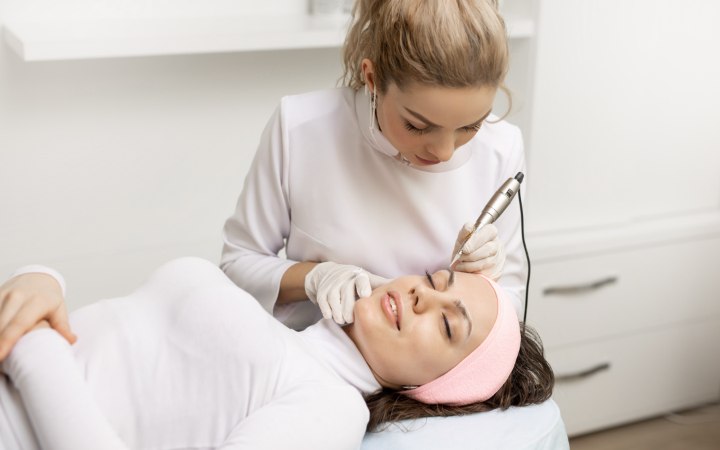Permanent Make-up

Have you ever wondered what it would be like if you didn’t have to worry about putting on your full load of make-up in the mornings, or whenever you wanted to go out? Or maybe you have poor vision and can’t see without your glasses on, but they interfere with your attempts to apply certain make-up types. You may be a woman, or a man, who has light hair and therefore pale brows and lashes and would like to have a way to enhance your appearance with a more natural-looking result.
These are just a few of the reasons that some people pursue permanent cosmetic make-up. Considered by its practitioners to be the “state of the art” form of cosmetic tattooing, Permanent Cosmetic Make-up is very similar to the traditional body art practice that was the origin of the idea for permanent cosmetics.
Some of the procedures are performed using various machines and methods, from traditional and specially designed tattooing machines, to pen or rotary machines. Even non-machined application methods are used in many cases, depending on the type of procedure and the specific result desired. Usually the term “procedure” includes multiple visits: client consultation, the initial application of pigment, and usually one or two follow-up visits in order to adjust the shape and color density of the pigment.
Areas where Permanent Cosmetics are Beneficial
There are some cases where many of the micropigmentation services can be beneficial for the recipient in dealing with other medical problems. Common situations in which permanent cosmetic procedures can help include:
Post Surgery – There are many cases of women who seek cosmetic reconstruction of the areola after mastectomy, or in order to blend away lighter-toned scar tissue from burns, surgery, accidents or other injuries, or for a redefinition of the facial features after reconstructive surgery.
Alopecia – Those persons suffering from alopecia areata or universalis who have lost some or all of their facial hair (including brows and lashes) can often find that micropigmentation can be used to mimic hair and camouflage the bald patches associated with alopecia.
Chemotherapy – For the same reasons as with alopecia sufferers, chemotherapy patients may find that they want to be able to hide the thinning or bald patches of hair loss caused by many chemotherapy treatments.
Vitiligo – People suffering from vitiligo can have areas of skin that have lost the natural pigmentation. Permanent cosmetic treatments can be used to add pigment to the necessary areas and blend away the discrepancies in skin tone.
Allergy Sufferers – Many people have severe allergies to cosmetics and cannot wear traditional cosmetics. Micropigmentation offers them a way to enhance their appearance without suffering from the allergic symptoms.
Disabilities – For those people with visual impairment or impaired motor skills (including arthritis, Parkinson’s, Multiple Sclerosis, stroke, etc.) permanent cosmetics can provide the esthetic enhancements they want, but are physically unable to do for themselves due to lack of coordination or visual acuity.
Convenience – Physically active women who don’t want to worry about “sweating away” their make-up, or busy moms and other Professionals who simply don’t have time to apply makeup every day may find permanent cosmetic applications to be a benefit.
Next Page